Portraits of Dissent and a Manifestation of Surveillance
Photographing Hong Kong's student protesters.
In 2019, student-led protests erupted in Hong Kong after the Chinese government proposed a bill to allow extradition to China, another attempt to control the supposedly autonomous Hong Kong—control that has now largely been secured nearly two years later.
I covered the 2014 “Umbrella Movement” protests in Hong Kong for The New York Times. Student protesters used umbrellas to protect themself from police pepper spray and staged sit-ins on the street, dressed in black, backdropped by skyscraper shrines of capitalism and free-market economics.
These protests were mostly peaceful. Organized groups handed out water and cleaned the streets afterward. I remember joking with other photographers as we looked across a sea of people dressed in black that it was like being at a Radiohead concert.

2019 was different. Tear gas wafted from Kowloon to Central Hong Kong as protesters waged guerrilla war with the police like neo-punk gladiators. They dressed again in black, but this time wore gas masks, elbow pads, face masks, and chest pads.
There was an urgency to their cause—the war cry was “be water.” Students would surge through the streets, dissipate and surge again, voting for their movements democratically in real-time on the app Telegram. They would come together in streets and alleys, modern shopping malls, and the MTR, Hong Kong’s gleaming subway system, before disappearing again. It was surreal for me to turn away from the protests and grab dinner among bankers and tourists—internationals in Hong Kong’s prosperous free-market ecosystem—then walk five blocks and duck tear-gas canisters again.
As I photographed the protests for Time magazine, I realized I wasn’t just witnessing a protest movement that represented Hong Kong youths’ discontent with an authoritarian China, I was also seeing the future of protest. These young people in Hong Kong symbolized the modern protester. They showed how dissent will unfold against power in the future—protesters hiding and adopting guerrilla tactics instead of standing publicly for a cause.
The difference I saw between this movement and previous protests is that technology and surveillance had heightened the threat of retribution. Protesters could be identified by the Chinese government and charged retroactively, and many feared that facial recognition would be used to identify and arrest them. So the protesters operated in anonymity, wearing masks and helmets for safety—and to conceal their identity. More than five thousand protesters were arrested by the end of 2019; since then, a national security law has resulted in more arrests.
The situation inspired me to make a set of portraits that could discuss the situation in Hong Kong beyond the spectacle of tear gas and skirmishes in the streets. I pitched this project to my editor Andrew Katz at Time; we decided I would photograph protesters in a studio and obscure their identities through lighting and poses, as well as their protective equipment and clothing.
This project ran more like a commercial shoot than most of my work. I booked a photo studio in Hong Kong, hired a commercial lighting assistant who was more familiar with lighting luxury cars than people and worked with a journalist from Time’s office in Hong Kong who found and scheduled the subjects. Many of the protesters were wary the project was a Chinese trap to identify them; it took serious effort by my colleague to convince them otherwise. We asked all the protestors to dress for the photo just as they would dress on the streets.
I needed to set a tone with studio lighting that felt appropriate to the issue I was photographing. My experience on the street informed these decisions, seeing protestors hide from police in alleys or huddle in groups looking at their cell phones, dimly lit by street lights. LCD screens in shop windows or from billboards kept coming back to me. The ambient street light I had seen was low-key with a soft fill light from the electronic light sources. The quality of this light is what I tried to replicate in the studio.
On shoot day one, something happened that I hadn't anticipated. When the first protesters stood under the lights, they were so obscured by their attire that the portraits lacked any human elements. It was photographing props rather than idealistic young students. I was failing to articulate the comment on state surveillance and the people it affected. The photo below is one that I considered a failure; it was never published or chosen by Time. This photo failed in my eyes because it looks like a statue devoid of struggle and feelings. There are no signifiers to connect the protest paraphernalia to the plight of the protester.
I had to change my tactics. Instead of asking the protesters to wear all their protest gear, I asked them to sit unmasked to start. Many of the protestors were nervous because they were concerned about being identified. I assured them I would conceal their faces and conversed with each of them about what they had brought and how we could use it. Together, we built their costume for the photograph—just enough to conceal their identity but not so much that we lost a sense of the individual.
After I photographed two young students, they prepared to leave the studio—one put on their white pressed school shirt with a tie. The power of this symbolism felt more important than gas masks and black clothes. I asked the students to sit for me again. I knew I needed to make an image that showed they were school students—kids.
I had one turn his back on the camera, then asked the other what he had in his backpack
“My school books,” he replied.
“Would you like to hold one of them in front of your face?” I asked. And he did.
Equipment and Specs
Mirrorless digital camera
85mm lens
1/160 shutter
F 5.6
ISO 800
5 x strobe heads
1 x large loft lighter
1 x 4-foot soft box
Barn doors
2 x 70 degree reflectors (with grid set)
Neutral density sheets - ND4
4 x flags
2 x diffusion sheets
2 x v-flats
I replicated the low-key Hong Kong street light by using four fill lights, all at low power. My key light was at a higher power to accent part of the protesters' faces. I metered the key light first, then slowly added the fill lights and saw what each one did. Creating a set-up light by light is a better method than turning on all the lights and trying to adjust them in unison. I forgot to write down my power pack settings at the end of this shoot, but they wouldn't be helpful anyway. Every studio or improvised shoot space is different because of the color of the walls, ambient light, the distance between walls, and the impact this distance has on bouncing light. Here are the five lights I used:
Key Light: This was a meter higher than each protester and pointed down at their face. I wrapped diffusion over a bare head to soften the light source. Two v-flats created a strip for the light to shine through, and a black flag was adjusted up and down along this slit for each protester. The v-flats and flag allowed me to create a small area of light landing on each subject.
Fill Light: Flash head with a 70-degree reflector and ND4 density diffuser. This fill light was at minimum power, barn doors flagged the light so it was just working on the shadow side of protesters face, and the neutral density filter reduced the power two stops below its minimum power.
Fill Light: A soft-lighter at low power filled the entire studio space, giving some fill to the protesters, but also bouncing off the roof, front of the studio, and filling the whole space.
Hair Light: Flash head with a 70-degree reflector and a medium grid. This was set at very low power, just enough to give the back of each protester a soft accent of hair light. A sheet of diffusion was put in front of the flash. A flag was also used to stop the light from spilling onto the background.
Fill Light: The final fill light was a large 4 ft. softbox that was placed at the back of the studio and pointed into the joint of the wall and roof. This gave a soft light that bounced into the entire studio space.
Tell a friend about what I’m doing here: share on Twitter or Facebook, forward this email, or send the link.
You can follow me on Instagram here.
If you have questions about photography you’d like to have me answer, get in touch at mail@adamfergusonstudio.com.

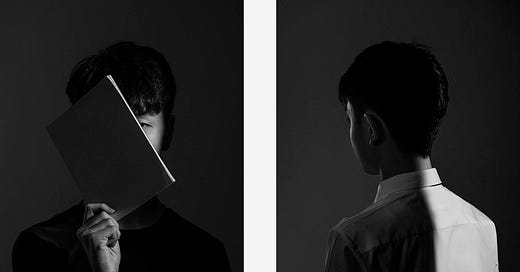

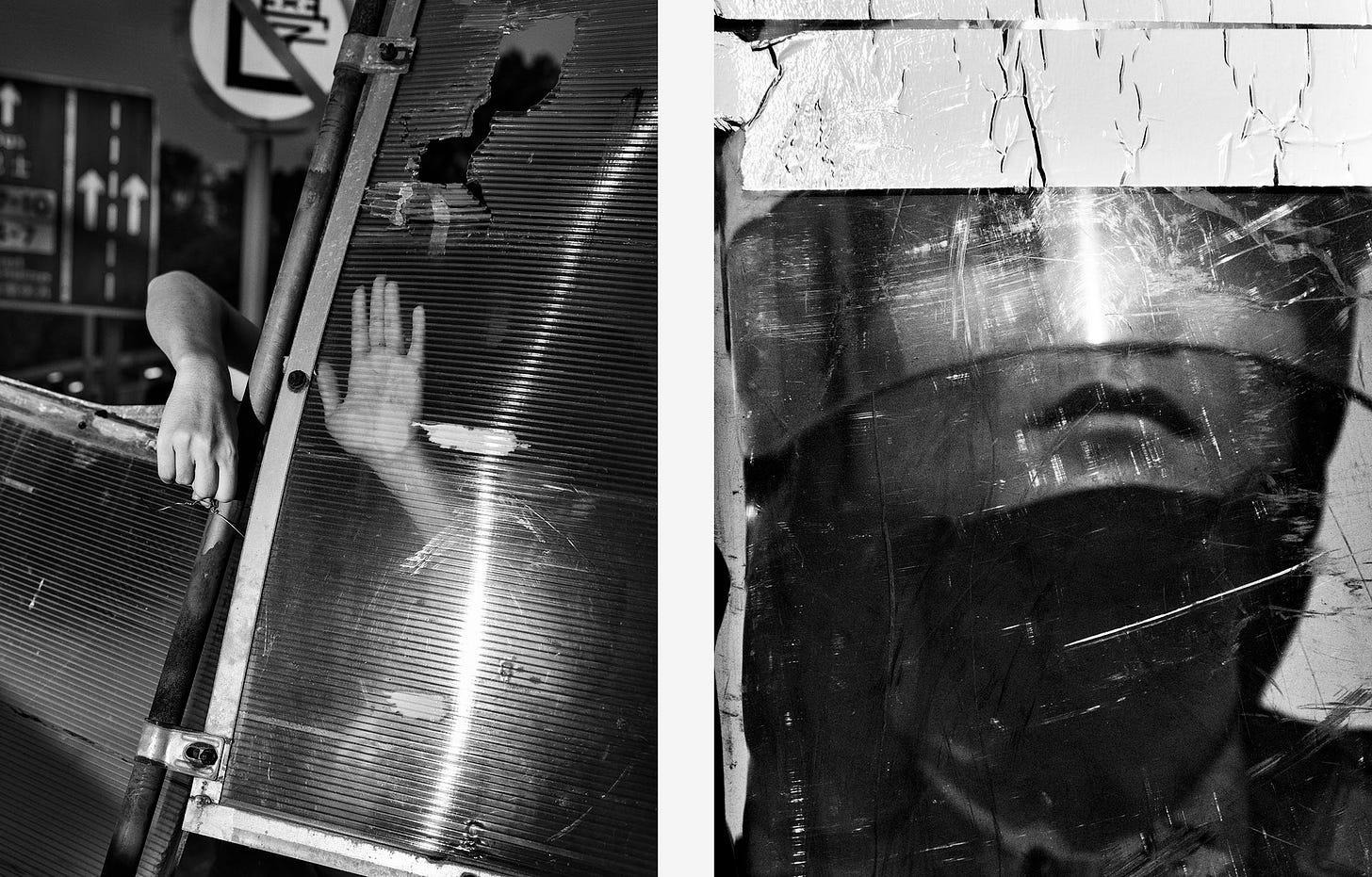
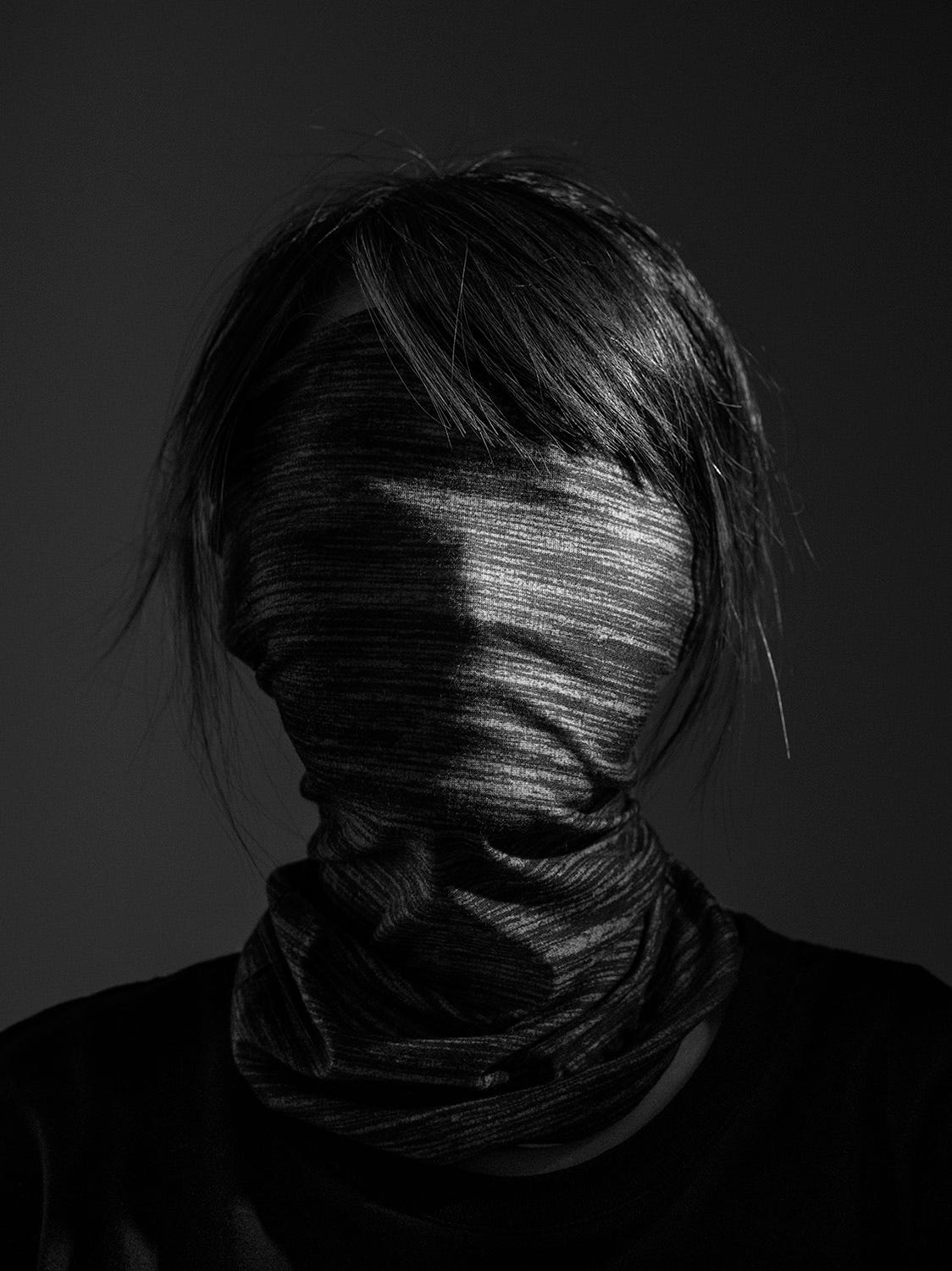
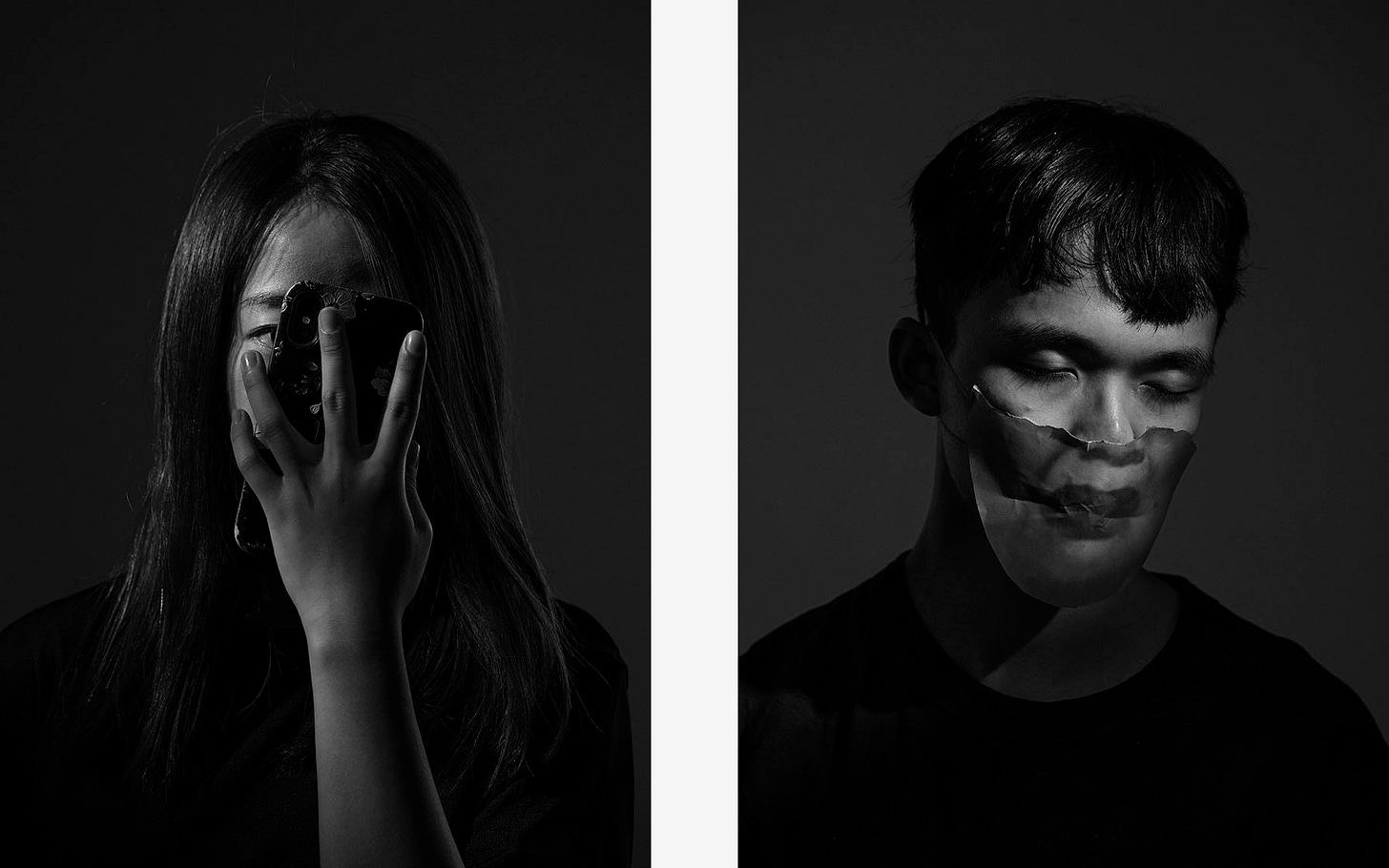
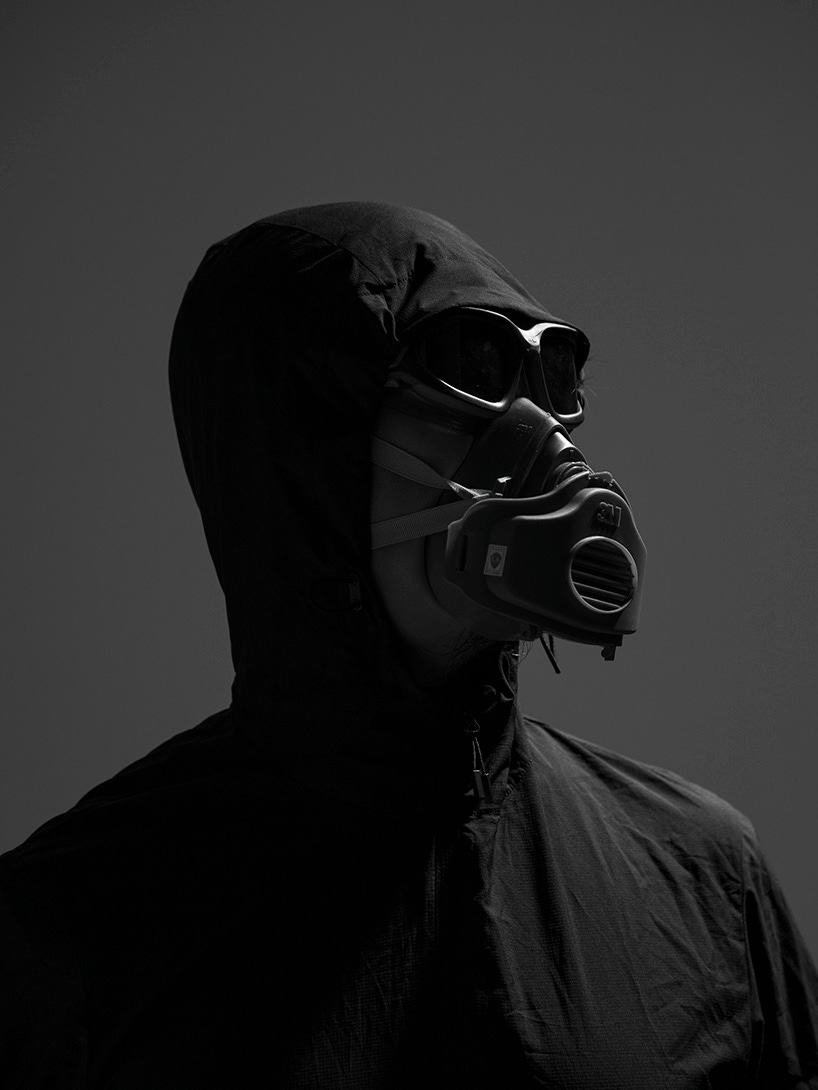


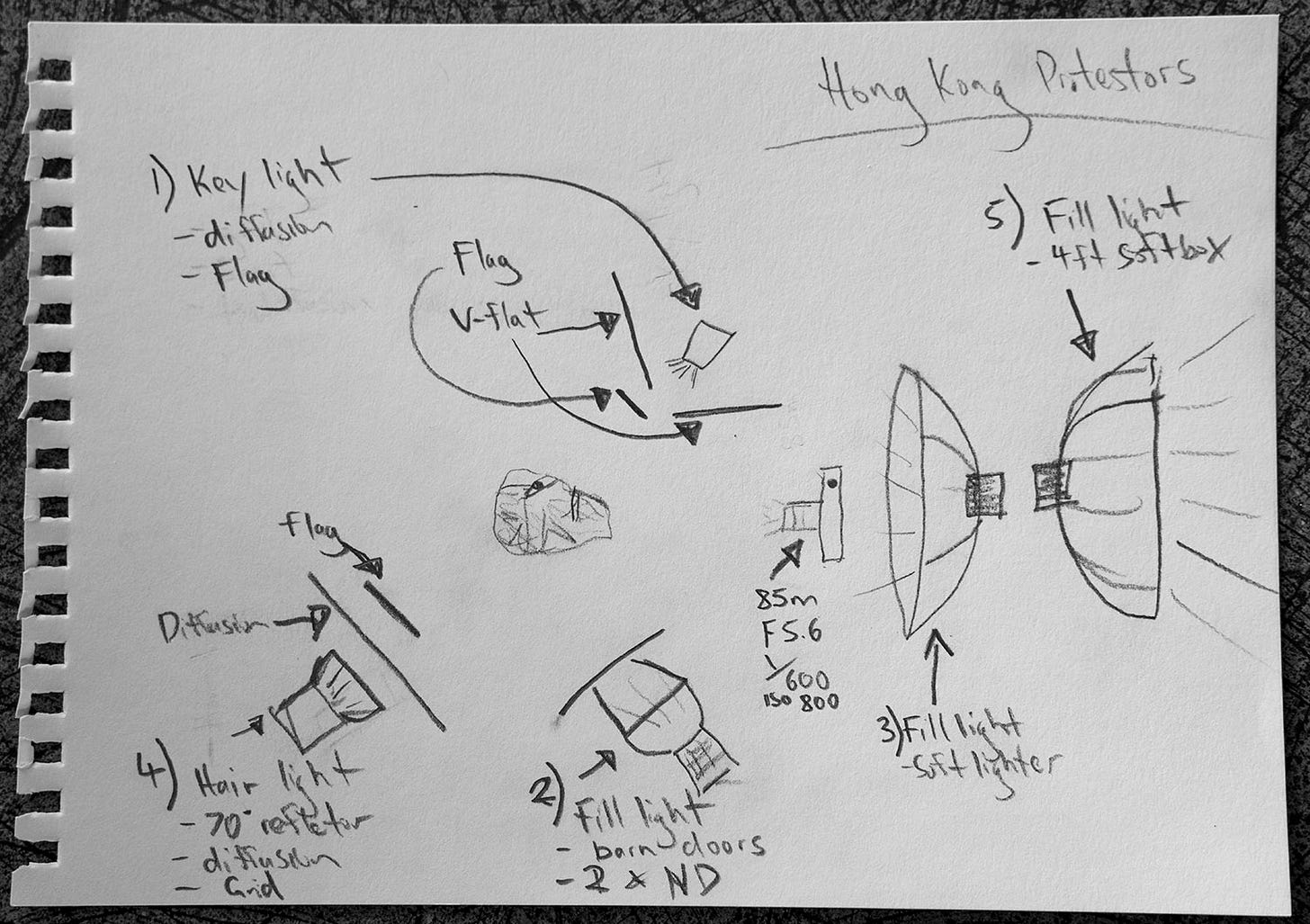
Hi Adam,
As an aspiring artist, I was so inspired by your thought process and story. In fact, I have featured your story and substack in my newsletter.
Link: https://rishikesh.substack.com/p/beatles-nft-wandering-elephants
The lighting is great and the behind the scene is appreciated. How you analyzed the technique with your vision for the portraits is what separates you from the rest. Well done!